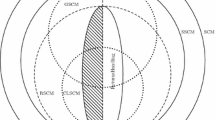Abstract
De-Commoditization strategies have received only limited attention in the literature. Referring to non-price-related de-commoditization, differentiation can occur on the basis of superior products and services as well as on the basis of superior customer relationships. However, knowledge on the extent to which these two strategies are applicable to commodity suppliers and how an integration of these strategies can contribute to an effective de-commoditization is still scant. Based on a literature review and a qualitative study in the refractories industry, this article identifies approaches to de-commoditization, ways of implementation, as well as internal and external prerequisites.
This chapter was originally published in German as Geigenmüller, A., & Aneziris, C. G. (2014). Umsetzung einer nicht-preisbezogenen De-Commoditisierung: Eine explorative Untersuchung in der Feuerfestindustrie, In M. Enke, A. Geigenmüller, & A. Leischnig (eds.), Commodity Marketing. Springer Gabler, Wiesbaden. Translated and updated with permission.
Access this chapter
Tax calculation will be finalised at checkout
Purchases are for personal use only
Similar content being viewed by others
References
Albert, T. C. (2003). Need-based segmentation and customized communication strategies in a complex-commodity industry: A supply chain study. Industrial Marketing Management, 32, 281–290.
Araujo, L., & Spring, M. (2006). Services, products, and the institutional structure of production. Industrial Marketing Management, 35, 797–805.
Auguste, B. G., Harman, E. P., & Pandit, V. (2006). The right service strategies for product companies. The McKinsey Quarterly, 1, 41–51.
Baaske, A., Dübers, D., Fandrich, R., Pischke, J., Quirmbach, P., & Schöttler, L. (2012). Refractory raw materials—Developments, trends, availability. Refractory World Forum, 4, 27–34.
Backhaus, K., & Voeth, M. (2010). Industriegütermarketing (9th ed.). Vahlen.
Blois, K. (1997). Are business-to-business relationships inherently unstable? Journal of Marketing Management, 13, 367–382.
Bonoma, T. V. (1985). Case research in marketing: Opportunities, problems, and a process. Journal of Marketing Research, 22, 199–208.
Bowen, D. E., & Schneider, B. (2014). A service climate synthesis and future research agenda. Journal of Service Research, 17(1), 5–22.
Bush, R. J., & Sinclair, S. A. (1992). Changing strategies in mature industries: A case study. Journal of Business and Industrial Marketing, 7, 63–72.
Davis, P. S., & Schul, P. L. (1993). Addressing the contingent effects of business unit strategic orientation on relationships between organizational context and business unit performance. Journal of Business Research, 27, 183–200.
Deneen, M. A., & Gross, A. C. (2010). Refractory materials: The global market, the global industry. Business Economics, 45, 288–295.
Droll, M. (2008). Kundenpriorisierung in der Marktbearbeitung: Gestaltung, Erfolgsauswirkungen und Implementierung. Gabler.
Eisenhardt, K. M. (1989). Building theories from case study research. Academy of Management Review, 14, 532–550.
Engelhardt, W. H., & Reckenfeldenbäumer, M. (2006). Industrielles service-management. In M. Kleinaltenkamp, W. Plinke, F. Jacob, & A. Söllner (Eds.), Markt- und Produktmanagement: Die Instrumente des business-to-business-marketing (2nd ed., pp. 209–318). Gabler.
Enke, M., Geigenmüller, A., & Leischnig, A. (Eds.). (2021). Commodity marketing. Springer Gabler.
Fleck, A. (1995). Hybride Wettbewerbsstrategien: Zur Synthese von Kosten- und Differenzierungsvorteilen. Deutscher Universitätsverlag.
Homburg, C., Fassnacht, M., & Günther, C. (2003). The role of soft factors in implementing a service-oriented strategy in industrial marketing companies. Journal of Business-to-Business Marketing, 10, 23–48.
Homburg, C., Krohmer, H., & Workman, J. P. (2004). A strategy implementation perspective of market orientation. Journal of Business Research, 57, 1331–1340.
Homburg, C., Staritz, M., & Bingemer, S. (2009). Wege aus der Commodity-Falle: Der Product Differentiation Excellence-Ansatz. Arbeitspapier Nr. M112. Institut für Marktorientierte Unternehmensführung: Mannheim.
Homburg, C., Stock, R., & Kühlborn, S. (2005). Die Vermarktung von Systemen im Industriegütermarketing. Die Betriebswirtschaft, 65, 537–562.
Johnston, W., Leach, M. P., & Liu, A. H. (1999). Theory testing using case studies in business-to-business research. Industrial Marketing Management, 28, 201–213.
Lewin, J. E., & Johnston, W. J. (1997). Relationship marketing theory in practice: A case study. Journal of Business Research, 38, 199–209.
Matthyssens, P., & Vandenbempt, K. (2008). Moving from basic offerings to value-added solutions: Strategies, barriers and alignment. Industrial Marketing Management, 37, 316–328.
Miller, D. (1988). Relating Porter’s business strategies to environment and structure: Analysis and performance implications. Academy of Management Journal, 31, 280–308.
Phillips, L. W., Chang, D. A., & Buzzell, R. D. (1983). Product quality, cost position and business performance: A test of some key hypotheses. Journal of Marketing, 47, 26–43.
Rangan, V. K., & Bowman, G. T. (1992). Beating the commodity magnet. Industrial Marketing Management, 21, 215–224.
Reimann, M., Schilke, O., & Thomas, J. S. (2010). Customer relationship management and firm performance: The mediating role of business strategy. Journal of the Academy of Marketing Science, 38, 326–346.
Robinson, T., Clarke-Hill, C. M., & Clarkson, R. (2002). Differentiation through service: A perspective from the commodity chemicals sector. The Service Industries Journal, 22, 149–166.
Routschka, G., & Wuthnow, H. (2011). Praxishandbuch feuerfeste Werkstoffe: Aufbau, Eigenschaften, Prüfung (5th ed.). Vulkan.
Sheth, J. N. (1985). New determinants of competitive structures in industrial markets. In R. E. Spekman & D. T. Wilson (Eds.), A strategic approach to business marketing (pp. 1–8). American Marketing Association.
Turnbull, P., Ford, D., & Cunningham, M. (1996). Interaction, relationships and networks in business markets: An evolving perspective. Journal of Business and Industrial Marketing, 11, 44–62.
Woodside, A. G., & Wilson, E. J. (2003). Case study research methods for theory building. Journal of Business and Industrial Marketing, 18, 493–508.
Yin, R. (2006). Case study research—Design and methods (3rd ed.). Sage.
Acknowledgments
This paper originates from research results obtained in the priority program 1418 “Feuerfest—Initiative zur Reduzierung von Emissionen—FIRE,” funded by the Deutsche Forschungsgemeinschaft DFG. The authors thank DFG for its financial support within the program.
Author information
Authors and Affiliations
Corresponding author
Editor information
Editors and Affiliations
Rights and permissions
Copyright information
© 2022 The Author(s), under exclusive license to Springer Nature Switzerland AG
About this chapter
Cite this chapter
Geigenmüller, A., Aneziris, C.G. (2022). Non-price-Related De-commoditization: An Exploratory Study in the Refractories Industry. In: Enke, M., Geigenmüller, A., Leischnig, A. (eds) Commodity Marketing. Management for Professionals. Springer, Cham. https://doi.org/10.1007/978-3-030-90657-3_19
Download citation
DOI: https://doi.org/10.1007/978-3-030-90657-3_19
Published:
Publisher Name: Springer, Cham
Print ISBN: 978-3-030-90656-6
Online ISBN: 978-3-030-90657-3
eBook Packages: Business and ManagementBusiness and Management (R0)




